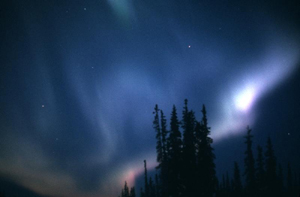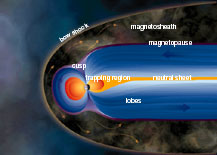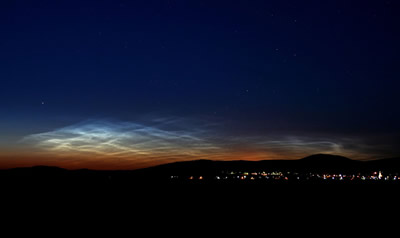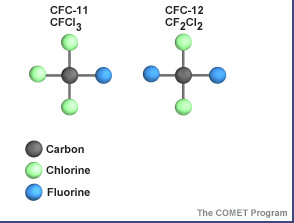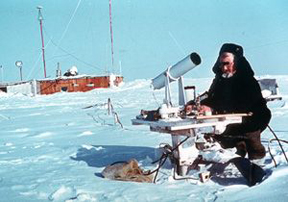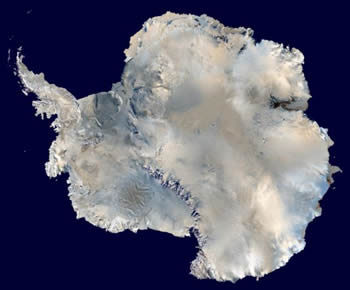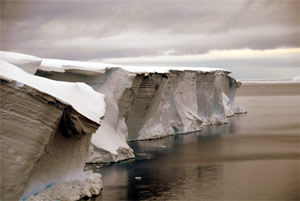Click on image for full size
University Corporation for Atmospheric Research
The Polar Atmosphere
Phenomena in the Polar Atmosphere
There are some unique phenomena that happen in the atmosphere that is above the Earth's polar regions. Read on to discover more about some of the unique parts of the polar atmosphere.
Aurora:High in the thermosphere layer of Earth's atmosphere, energized particles that come from the Sun follow Earth's magnetic field lines toward the Poles. The gases of the upper atmosphere light up with the added energy. The display can only be seen at high latitudes and is called the aurora borealis (Northern Lights) in the Northern Hemisphere and the aurora australis (Southern Lights) in the Southern Hemisphere.
Noctilucent Clouds: In the mesosphere layer of Earth’s atmosphere, below the thermosphere and above the stratosphere, noctilucent clouds form in the polar regions. This is much higher in the atmosphere than typical clouds, but noctilucent clouds are not typical clouds. The word noctilucent means to glow, and these clouds do glow blue in color when they are lit from below by the setting Sun.
Less Ozone: The ozone layer, located in the stratosphere layer of the atmosphere, shields our planet from harmful UV radiation. However, during the 20th Century pollutants that were used in aerosol cans and refrigeration destroyed a large amount of ozone. Most of the ozone destruction happened in the part of the stratosphere that is over Earth’s polar regions. There are now a number of ozone holes, areas where the amount of ozone is only about a third of what it used to be, including a very large hole over Antarctica.
Cold Weather: Less solar energy gets to the poles making for lots of cold weather. However, even though both poles get the same amount of sunlight, the North Pole is less cold and has different weather than the South Pole. This is because the North Pole is over the Arctic Ocean, which is less cold than Antarctica and its thick layer of ice. Antarctica is the coldest continent on Earth. It has some of the harshest weather on the planet with high winds and low precipitation. Weather events happen in the troposphere layer of Earth’s atmosphere, which is about half as thick at the poles as it is at the equator.


